Discover 11 hidden attractions, cool sights, and unusual things to do in Konya (Turkey). Don't miss out on these must-see attractions: Mevlana Museum, Alâeddin Mosque, and Ince Minaret Medrese. Also, be sure to include Karatay Madrasa in your itinerary.
Below, you can find the list of the most amazing places you should visit in Konya (Konya).
Table of Contents
Mevlana Museum
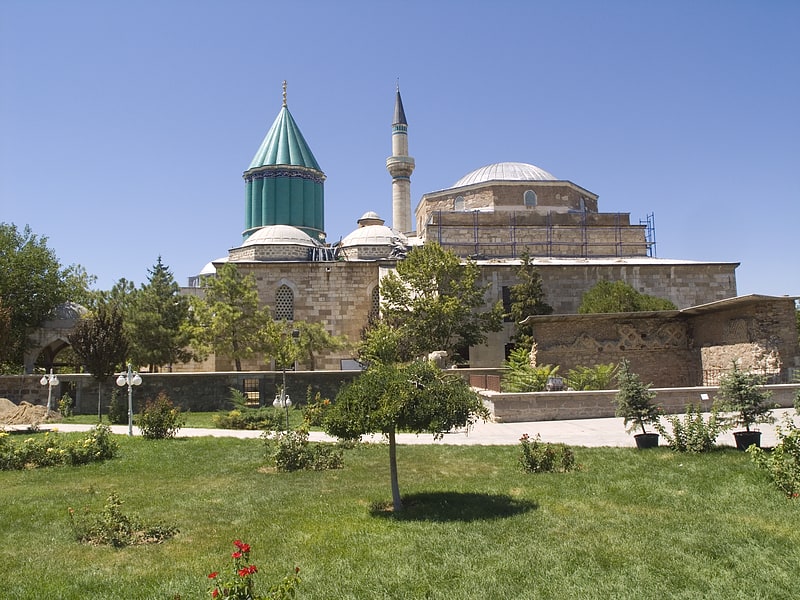
Also known as: Mevlânâ Müzesi
Historic mausoleum and dervish museum. The Mevlâna Museum, located in Konya, Turkey, is the mausoleum of Jalal ad-Din Muhammad Rumi, a Persian Sufi mystic. It was also the dervish lodge of the Mevlevi order, better known as the whirling dervishes.
Sultan 'Ala' al-Din Kayqubad, the Seljuk sultan who had invited Mevlâna to Konya, offered his rose garden as a fitting place to bury Rumi's father, Baha' ud-Din Walad (also written as Bahaeddin Veled), when he died on 12 January 1231. When Mevlâna died on 17 December 1273 he was buried next to his father.
Mevlâna's successor Hüsamettin Çelebi decided to build a mausoleum (Kubbe-i-Hadra) over the grave of his master. The Seljuk construction, under architect Badr al-Din Tabrizi, was finished in 1274. Gurju Khatun, the wife of the Seljuk Emir Suleiman Pervâne, and Emir Alameddin Kayser funded the construction. The cylindrical drum of the dome originally rested on four pillars. The conical dome is covered with turquoise faience.
However several sections were added until 1854. Selimoğlu Abdülvahit decorated the interior and performed the woodcarving of the catafalques.
The decree of 6 April 1926 confirmed that the mausoleum and the dervish lodge (Dergah) were to be turned into a museum. The museum opened on 2 March 1927. In 1954 it was renamed as "Mevlâna Museum".
One enters the museum through the main gate (Devisan Kapısı) to the marble-paved courtyard. The kitchen of the dervishes (Matbah) and the Hurrem Pasha tomb, built during the reign of Süleyman the Magnificent, are located on the right side. On the left side are 17 dervish cells lined up, covered with small domes, and built during the reign of Murad III. The kitchen was also used for educating the dervishes, teaching them the Sema. The ṣadirvan (washing fountain) in the middle of the courtyard was built by Yavuz Sultan Selim.
One enters the mausoleum and the small mosque through the Tomb gate (Türbe Kapisi). Its two doors are decorated with Seljuk motifs and a Persian text from mollah Abdurrahman Cami dating from 1492. It leads into the small Tilavet Room (Tilavet Odası) decorated with rare and precious Ottoman calligraphy in the sülüs, nesih, and talik styles. In this room the Koran was continuously recited and chanted before the mausoleum was turned into a museum.
One enters the mausoleum from the Tilavet Room through a silver door made, according to an inscription on the door, by the son of Mehmed III in 1599. On the left side stand six coffins in rows of three of the dervishes (Horasan erler) who accompanied Mevlâna and his family from Belkh. Opposite to them on a raised platform, covered by two domes, stand the cenotaphs belonging to the descendants of the Mevlâna family (wife and children) and some high-ranking members of the Mevlevi order.
The sarcophagus of Mevlâna is located under the green dome (Kibab'ulaktab). It is covered with brocade, embroidered in gold with verses from the Koran. This, and all other covers, were a gift of sultan Abdul Hamid II in 1894. The actual burial chamber is located below it. Next to Mevlâna's sarcophagus are several others, including the sarcophagi of his father Bahaeddin Veled and his son Sultan Veled. The wooden sarcophagus of Mevlâna dates from the 12th century now stands over the grave of his father. It is a masterpiece of Seljuk woodcarving. The silver lattice, separating the sarcophagi from the main section, was built by Ilyas in 1579.
The Ritual Hall (Semahane) was built under the reign of Süleyman the Magnificent at the same time as the adjoining small mosque. In this hall the dervishes used to perform the Sema, the ritual dance, on the rhythm of musical instruments such as, the kemence (a small violin with three strings), the keman (a larger violin), the halile (a small cymbal), the daire (a kind of tambourine), the kudüm (a drum), the rebab (a guitar) and the flute, played once by Mevlâna himself. All these instruments are on display in this room, together with an ancient Kirşehir praying rug (18th century), dervish clothes (Mevlâna's included) and four crystal mosque lamps (16th century, Egyptian Mameluk period). In this room one can also see a rare Divan-i-Kebir (a collection of lyric poetry) from 1366 and two fine specimens of Masnavis (books of poems written by Mevlâna) from 1278 and 1371.
The adjoining small mosque (Masjid) is now used for the exhibition of a collection of old, illustrated Korans and extremely valuable prayer rugs. There is also a box (Sakal-i Ṣerif), decorated with nacre, containing the Holy Beard of Muhammad.
The mausoleum was depicted on the reverse of the Turkish 5000 lira banknotes of 1981–1994. It received 2.5 million visitors in 2017, making it Turkey's most visited museum that year.[1]
Address: Aziziye Mah, Mevlana Cd. No:1, 42030 Karatay
Alâeddin Mosque
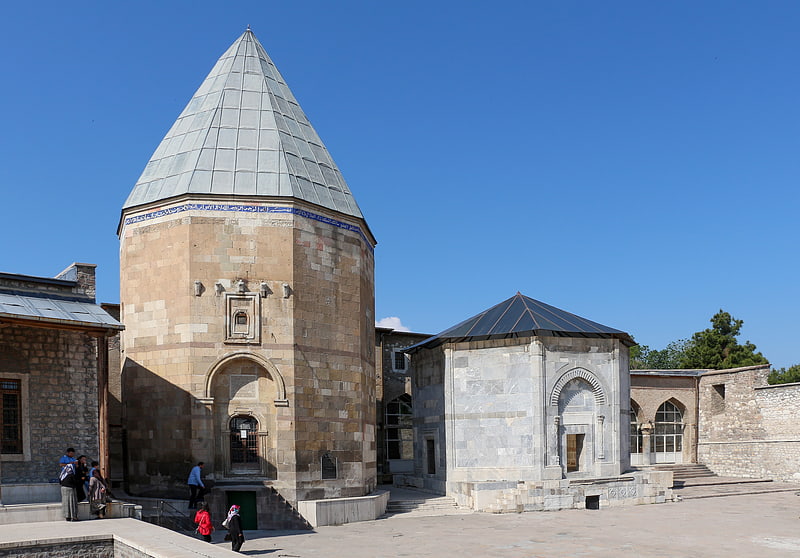
Also known as: Alâeddin Camii, Konya
Mosque in Konya, Turkey. The Alâeddin Mosque is the principal monument on the citadel of Konya, Turkey. The building served as the "Mosque of the Throne" for the Seljuq Sultans of Rum and contains the dynastic mausoleum. It was constructed in stages between the mid-12th and mid-13th centuries. Both the citadel and the mosque bear the name of sultan 'Ala al-Din Kayqubad I.[2]
Address: Alaeddin Tepesi, Konya
Ince Minaret Medrese
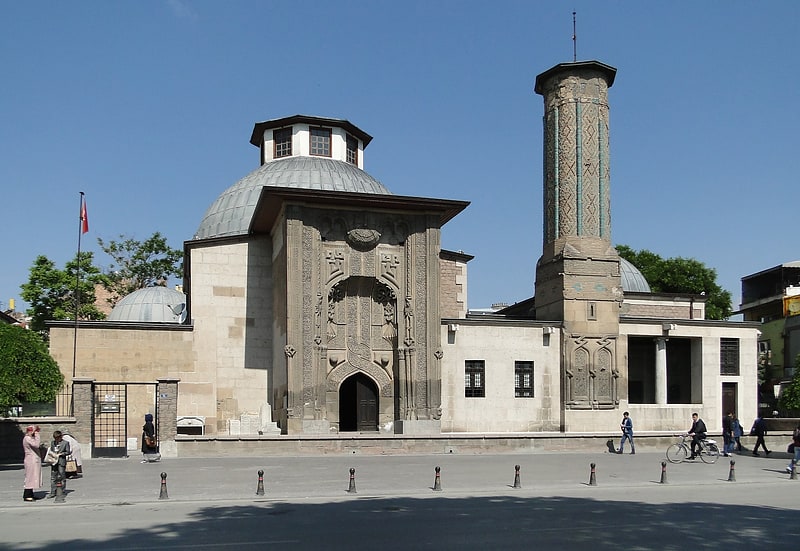
Also known as: İnce Minareli Medrese
Museum. İnce Minareli Medrese is a 13th-century madrasa located in Konya, Turkey, now housing the Museum of Stone and Wood Art, noted for its ornate entrance, domed courtyard, ornamentally bricked minaret, partially destroyed in 1901, and exemplar Anatolian Seljuk architecture.[3]
Address: Hamidiye Mah. Alaaddin Bulv. No:15 Meram Merkez, Meram, Konya
Karatay Madrasa
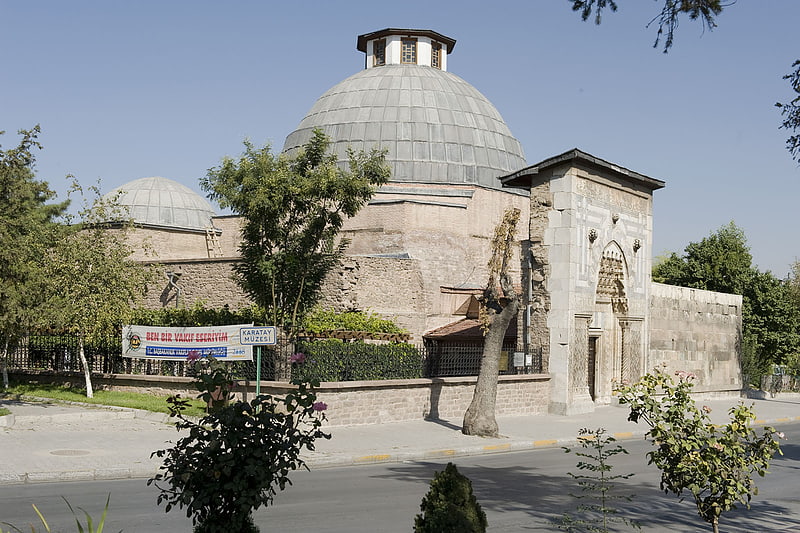
Also known as: Karatay Medresesi
Museum in Konya, Turkey. Karatay Madrasa is a madrasa built in Konya, Turkey, in 1251 by the Emir of the city Celaleddin Karatay, serving the Seljuk sultan.[4]
Address: Alaaddin Meydani, Konya
Konya Archaeological Museum
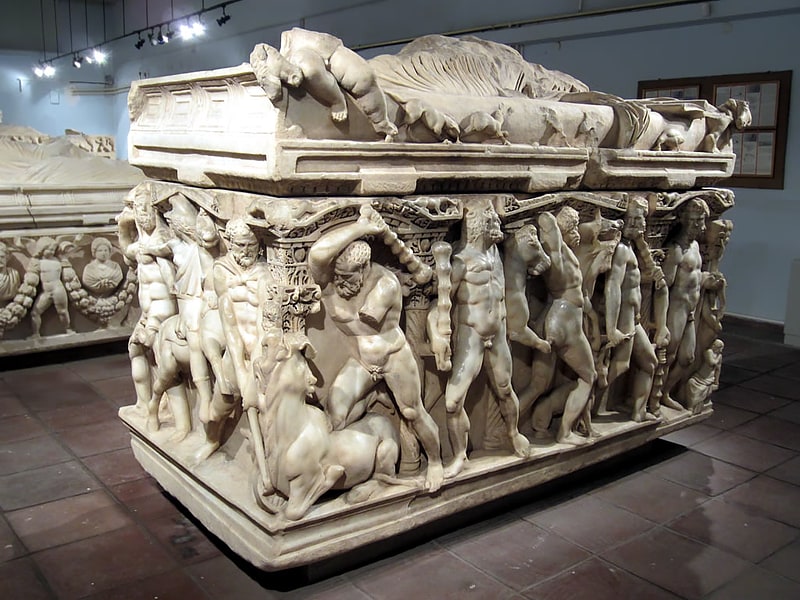
Also known as: Konya Arkeoloji Müzesi
Museum in Konya, Turkey. Konya Archaeological Museum is a state archaeological museum in Konya, Turkey. Established in 1901, it had been relocated twice before moving to its present location in 1962. One of the most prominent displays in the museum is of sarcophagi and other antiquities from the ancient city of Çatalhöyük. Other exhibits relate to the Neolithic, Bronze Age, Iron Age, Classical, Hellenistic, Roman and the Byzantine periods; artifacts consist of ceramic ware, stone and bronze wares, ornaments and inscriptions. A prominent display is of a marble sarcophagus of the 3rd century BC with elaborate sculpting events depicting the life of Hercules. In the outer open yard of the museum, there are a number of small sculptures, sarcophagi, column heads, and epigraphy.[5]
Address: Sahibiata Mh. Sahibiata Cd. No:91, Konya
Seljuk Tower
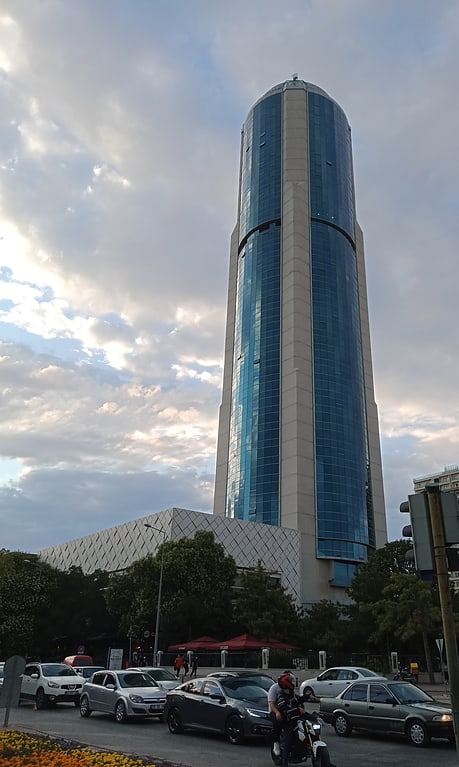
Skyscraper in Konya, Turkey. The 42-floor Seljuk Tower is a skyscraper within the Konya Trade Center business and shopping center in Konya, Turkey. At the time of its completion in 2006, it was the 11th-tallest skyscraper in Turkey and the tallest in Konya and the Central Anatolia Region.
The tower's official height is 163 m (535 ft) and has 42 floors above ground level. The top 2 floors are a revolving restaurant which rotates once in an hour, or 24 times in a day, offering panoramic views of the city.
Number 42 is the licence plate number for Konya, which was the reason for constructing 42 floors above ground level.
Kulesite AVM shopping mall is adjacent to the tower.[6]
Address: Kule Cad. 8, Selçuklu, Konya
Konya Tropical Butterfly Garden
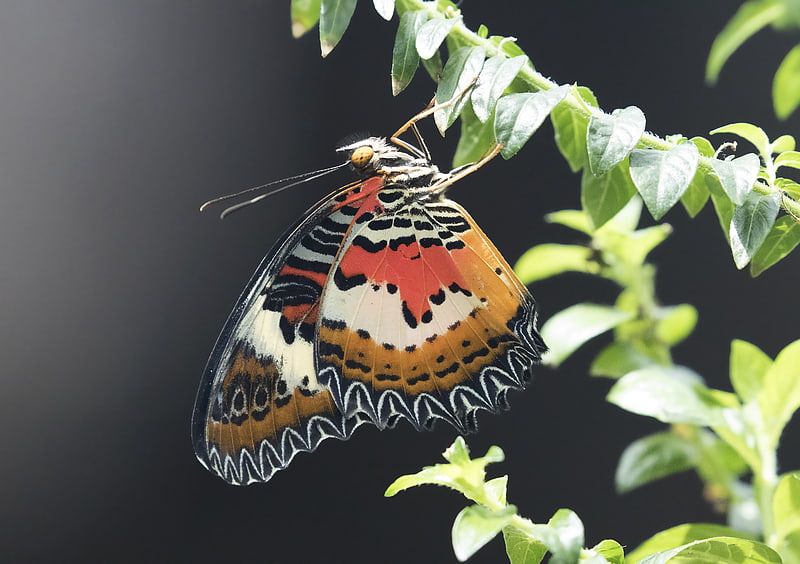
Konya Tropical Butterfly Garden, opened in 2015, is a butterfly house located in Selçuklu district of Konya Province, central Turkey.[7]
Address: 244 İsmail Kaya Caddesi, Konya
Konya Ethnography Museum
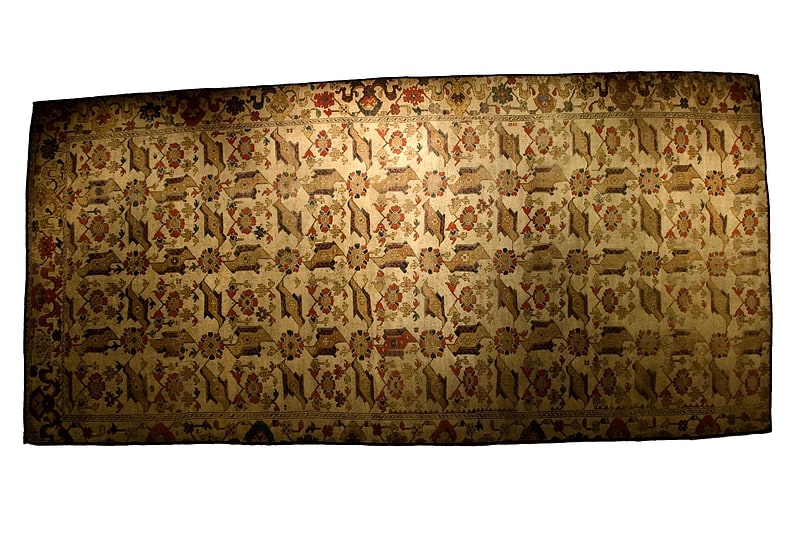
Also known as: Konya Etnografya Müzesi
Museum in Konya, Turkey. Konya Ethnography Museum is an ethnographic museum devoted to the people, cultures and lifestyle in and around Konya, Turkey.
The museum is on Sahip Ata Street. It is a two-story building with a basement. The basement is reserved for the offices and the photoshop. The conference room is in the ground floor. The museum was established on 6 December 1975.[8]
Sahip Ata Museum

Museum in Konya, Turkey. Sahip Ata Museum is an ethnography museum in Konya, Turkey. It is under the supervision of Directorate General of Foundations.[9]
Address: Sahibiata Mah. Taşcami Uzunharmanlar Cad. No:2, 42040 Meram
Sırçalı Medrese
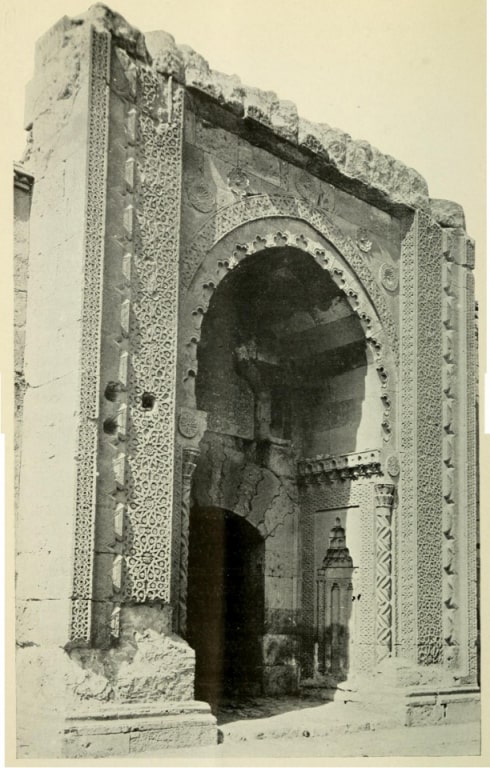
Place of worship in Konya, Turkey. Sırçalı Medrese is a 13th-century medrese in Konya, Turkey.[10]
Aziziye Mosque
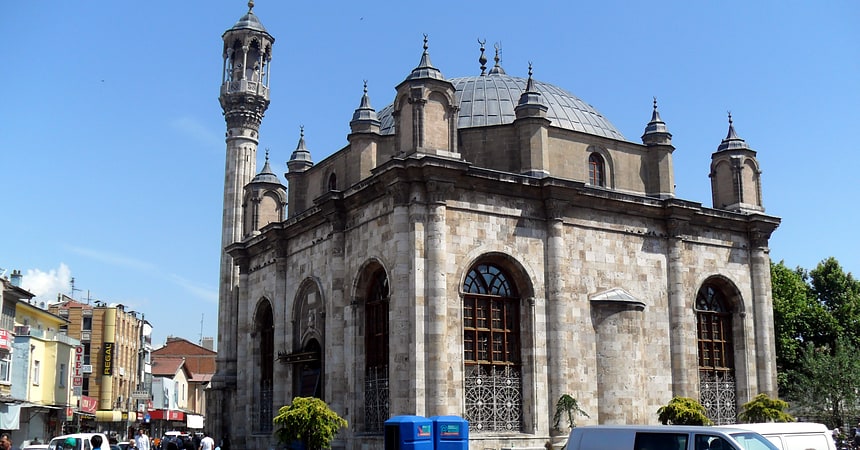
Also known as: Aziziye Camii
Mosque in Konya, Turkey. Aziziye Mosque or is an Ottoman mosque in Konya, Turkey. It is well-known for the columned balcony of its minaret, an architectural feature rarely seen in Turkish mosques.[11]